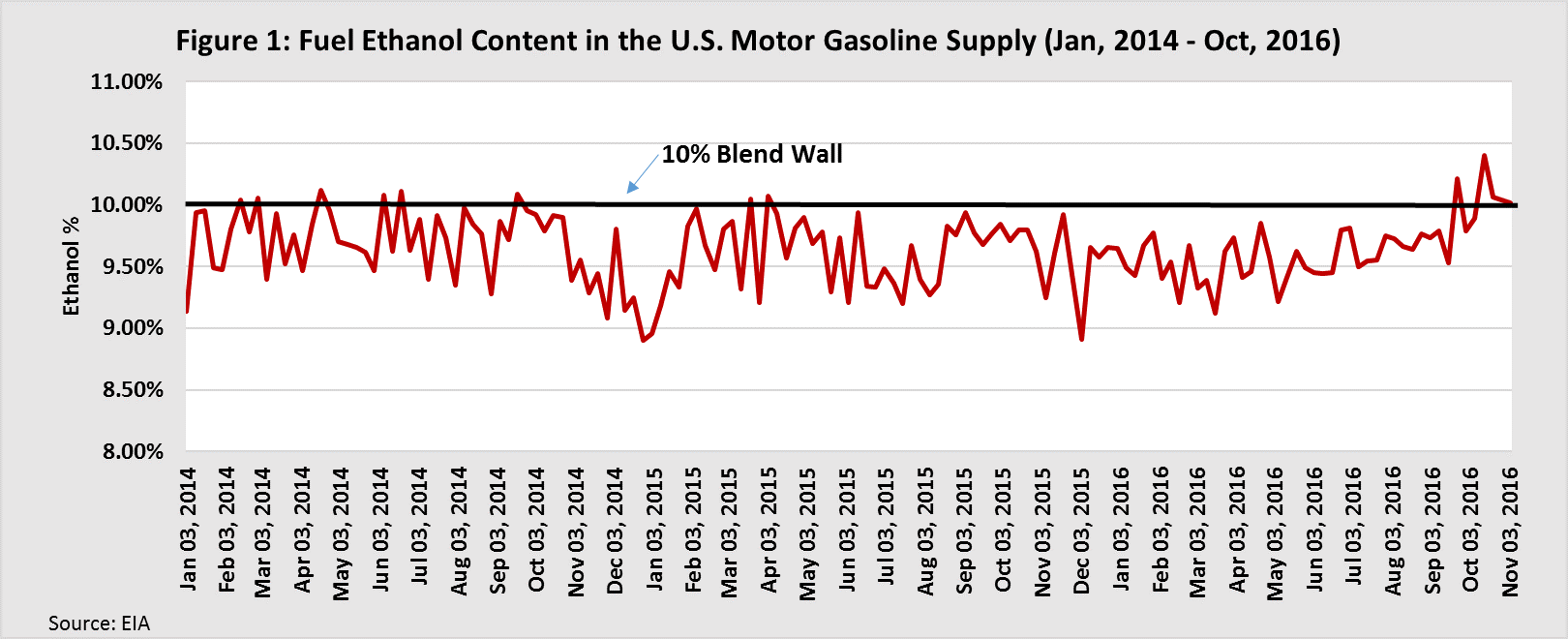The Weekly Petroleum Status Report released November 9, 2016 by the U.S. Energy Information Administration (EIA) indicates weekly U.S. refiner and blender net input of fuel ethanol was 923,000 barrels per day for the week ending November 4, 2016. The Weekly Supply Estimates from EIA shows the weekly U.S. product supplied of finished motor gasoline was 9,213,000 barrels per day for the same time period. This shows gasoline supplied to the U.S. market for the week ending November 4, 2016 consisted of an average of 10.02 percent ethanol as shown in Figure 1.

This is the fifth time in the last seven weeks that gasoline supplied consisted of an average over 10 percent ethanol blend, and four weeks in a row. Specifically, the week ending October 14, 2016 set a record of 10.4 percent in ethanol blending in the U.S. gasoline market. The previous high was 10.21 percent for the week ending September 23, 2016. According to the Renewable Fuel Standard (RFS) enacted in 2005 and modified in 2007, the Environmental Protection Agency’s (EPA) legal limit for the amount of ethanol that can be blended is 10 percent, which is known as the “blend wall.” The weekly average has been 9.64 percent of ethanol in gasoline during first 10 months in 2016. The weekly average blend rate was 9.6 percent in 2015 and 9.68 in 2014.
In November AgMRC renewable energy report, we looked at some of the basic economic factors driving higher ethanol blending rates in recent weeks. We pointed out that the value of blending ethanol is determined by the value of petroleum-crude oil and gasoline.

